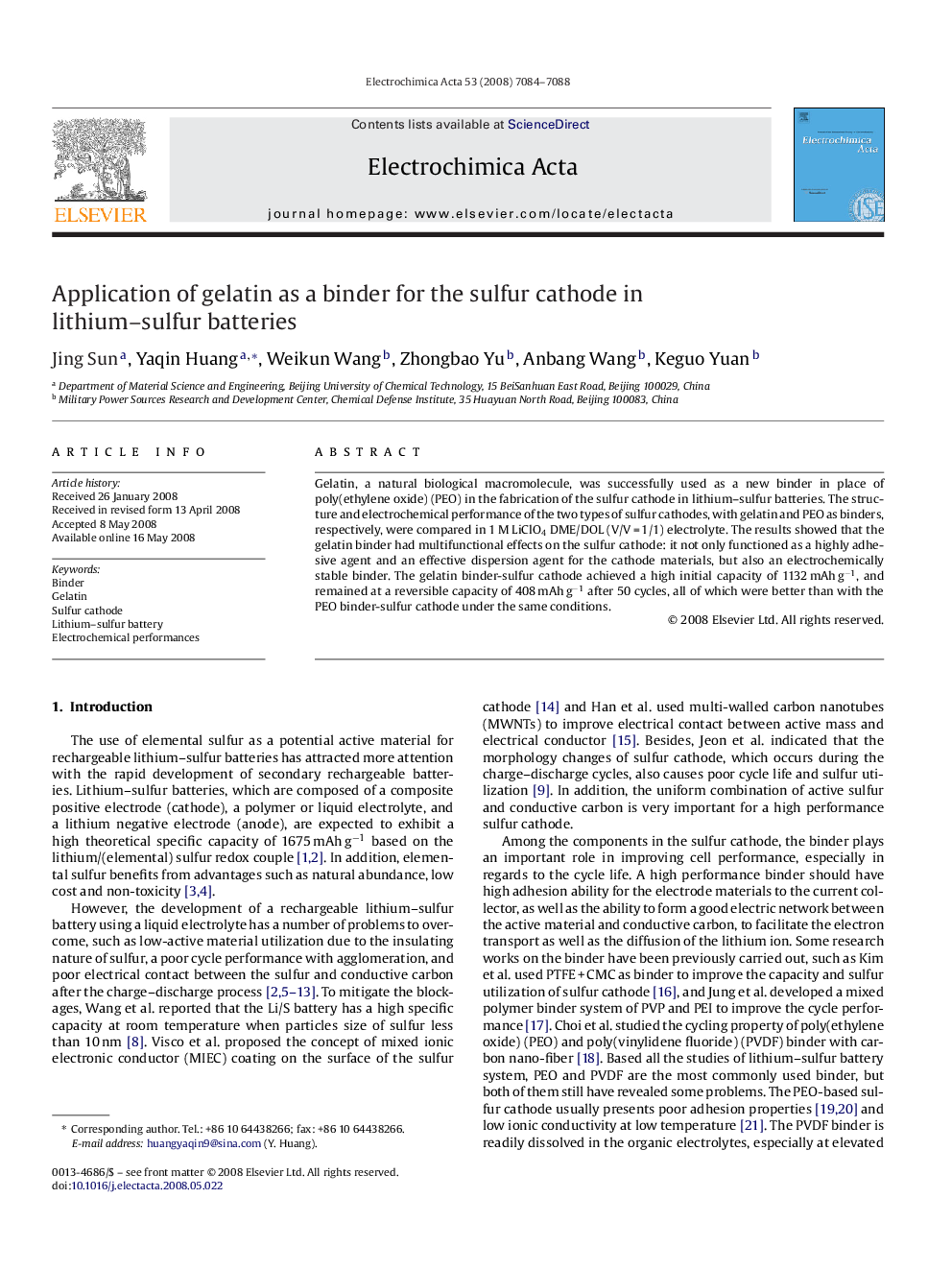| Article ID | Journal | Published Year | Pages | File Type |
|---|---|---|---|---|
| 192325 | Electrochimica Acta | 2008 | 5 Pages |
Gelatin, a natural biological macromolecule, was successfully used as a new binder in place of poly(ethylene oxide) (PEO) in the fabrication of the sulfur cathode in lithium–sulfur batteries. The structure and electrochemical performance of the two types of sulfur cathodes, with gelatin and PEO as binders, respectively, were compared in 1 M LiClO4 DME/DOL (V/V = 1/1) electrolyte. The results showed that the gelatin binder had multifunctional effects on the sulfur cathode: it not only functioned as a highly adhesive agent and an effective dispersion agent for the cathode materials, but also an electrochemically stable binder. The gelatin binder-sulfur cathode achieved a high initial capacity of 1132 mAh g−1, and remained at a reversible capacity of 408 mAh g−1 after 50 cycles, all of which were better than with the PEO binder-sulfur cathode under the same conditions.
